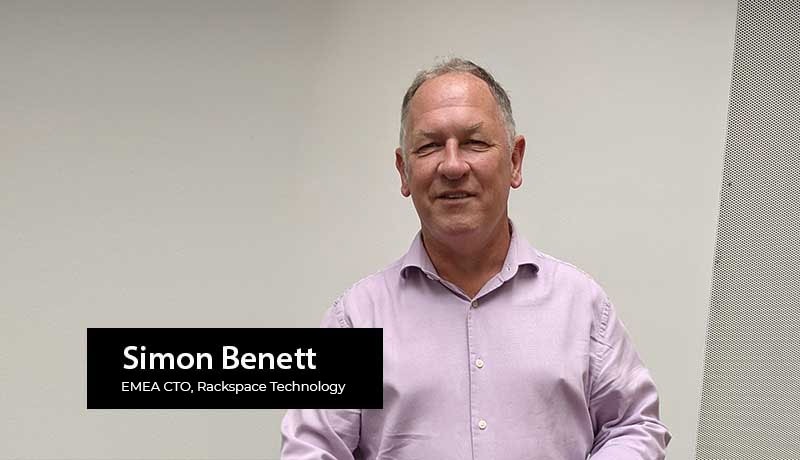
Simon Bennett, EMEA CTO, Rackspace Technology
We’ve been talking about the new normal in the region for some time, but when will it just become the norm? I think it already has, and businesses need to start playing catch up in 2022.
This can be anything from restructuring the office or improving video calling to make hybrid working more seamless, to reassessing the pace of digital transformation to suit the current market or optimising the use of technology that was rushed during the pandemic. Now is the time to engage properly with our not-so-new norm, as the time for excuses is running out.
The full-time office is long gone for many of us. If businesses haven’t embraced the flexibility of hybrid models yet, they’ll soon have to in order to compete for the best talent.
Offsetting that is the reality that most of us do want some face-to-face interaction and have missed it, so coming into the office a couple of days a week at most will stay the norm.Meeting in person helps to reignite innovation and can enable us to bounce off one another with ideas and random thoughts, which is far harder to replicate at home or over a screen.
This means that when we go to the office, it’s not to code or do work, but rather to collaborate and innovate, so the office set-up needs to reflect that –we don’t need banks of desks for people to sit at, for example.
What’s more, while flexibility is key, structure is also crucial. Businesses that coordinate office attendance and restructure the office will have much more success at enabling cross pollination across the company. Organisations simply can’t rely on this to happen organically on a long-term basis.
Coordinating office attendance also allows employees to network with the wider business, instead of just their team who they speak with on a daily basis anyway. In the long term, this is crucial for their professional growth and improvement.
Every business seems to use a different collaboration or video calling platform – whether it’s Microsoft Teams, Slack, Zoom or Google Meet, in addition to those offered by local providers such as CloudTalk Meeting by UAE’s Etisalat.
That’s fine when collaborating internally, but what about when we need to connect with customers or stakeholders? We’re left faffing around with multiple tools a day, switching between platforms that essentially perform the same function.
It often feels quite ridiculous,using up to five different tools a day just to have conversations with customers. And it is often clunky too, taking more time to join the calls and adding to frustrations.
Well, it’s time to put a stop to it. 2022 must come with good news of a solution that enables all of these platforms to interact seamlessly and us all to join calls and meetings directly from our service of choice.
It’s like phone networks. It doesn’t matter what network you, your family or your friends are on, you can call anyone from whatever device you’re using and communicate seamlessly. It’s time that businesses can do the same.
Digital transformation was vital for business continuity during the pandemic and organisations were willing to take risks in order to stay afloat.
This has consequently increased organisations’ appetite for risk, but also altered expectations as leaders have realised that transformations that once took months can now be achieved in a matter of weeks or even days.
However, customers are fickle and user experience when it comes to business change is becoming a greater concern than when customers were more lenient throughout the pandemic.
As such, Middle East businesses are coming to realise that they might have to sacrifice some of the pace of their digital transformation journeys to ensure the customers experience remains brilliant as ultimately, this is more important.
Gartner has predicted a rise in the use of cloud-native platforms for 2022, but the fact is it’s already a reality for Middle East businesses, and the amount of cloud-native work has increased a lot in the past 18 months for regional organizations.
Multicloud is ready and customers now don’t want to, and simply won’t, buy from just one provider. The best way to make a success of a multicloud environment and enjoy the most benefit from it is then to write apps that are portable.
The key now is to ensure these multicloud environments are constantly being optimised and that businesses are using the right platforms at the right time, and know what these are. Working with the right partner on this and benefitting from their expertise is crucial.
While a hot talking point in the media for some time, COP26 has certainly focused people’s attention on our collective climate responsibilities. Consumers as well as businesses in the Middle East are becoming much more environmentally aware and are now turning this awareness into active decision-making.
For consumers, this means looking at the credentials of an organisation whey wish to purchase from, which is starting to have a noticeable impact on decisions and behaviours.
For local businesses, especially those which have made their own commitment toward carbon neutrality, the expectation is being placed upon their own supply chain to match these goals.This is already becoming a key requirement to engage, and will only increase over the next year.
One thing we’ve learned from the past 18 months or so is that the only thing we can predict in this world is time. As a new yearly cycle is about to restart, only time will tell whether the trends discussed here will come to light.
